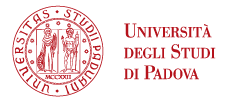Towards an interpretative model of proximity in local development projects
General Research Area TERRITORY
Project type UNIVERSITY PROJECTS
Funding UNIVERSITY FUNDING
Data avvio: 1 January 2015
Data termine: 1 January 2018
Coordinatore: MARINA BERTONCIN
Partecipanti
MARINA BERTONCIN
Abstract:
The research program aims to develop a model for the analysis and evaluation of the effects of proximity created by local development projects on the chances of success of such projects and thus on the development of the territory itself. A central aspect of recent studies of economic and social geography show, in fact, the importance of the dynamics of proximity determined by the projects. The proximity (geographical, but also organizational, cognitive, social and institutional) is essential for the success of innovations (productive, social, cognitive) that the projects want to spread in the concerned areas. A local development project is defined as any planned intervention by external actors in an area for some reason and to some extent "in trouble", in order to foster social, environmental, political and economic dynamics of improvement. The research focuses on a few selected case studies from the long research experiences of the group, not only for their relevance in the territories where they are hosted and with respect to the issue at hand, but also because they are currently involved in development projects characterized by new or innovative ways of intervention. The case studies also cover a selected micro-meso-and macro-scale survey in order to estimate the dynamics also in respect of a global exposure. The first case concerns the development of new interventions: private and public investment in agriculture both foreign and local in particularly sensitive areas of Sahelian Africa. Will be studied among others the relationship between the Gulf countries (Saudi Arabia in particular) and the Sudan. With the latter country (University of Khartoum), there is a well-established scientific cooperation agreement. The research group is progressing towards the establishment of a similar agreement with Saudi Arabia. The second case concerns new territorial development projects stemming from the effects of industrial SME relocation, in both territories involved: those of arrival of enterprises (Eastern Europe and Romania in particular) and those from where the companies have moved (the industrial districts in the so called Northeast of Italy).
The third case concerns the land conservation projects, not only from an environmental point of view but also territorial, in the Po Delta, an area as important as fragile, through proposals such as the Contract of outhnwithin which one of our focus will be on the floods risk perception and the role of wet spaces.
For the latter case it will attempt to represent the dynamics of proximity that are created during the participatory process through the use of the GIS.
The actors proposing the project alter, through their action, the dynamic field of proximity relations already existing among local actors within their territory. The lack of consideration of certain elements of this dynamic field or the excessive imbalance between them results in an unstable territoriality, which has an impact – ither immediately or over time - on the effectiveness and efficiency of the projects implemented.
The basic objective of this research program is to define a model for analyzing and evaluating the effects of proximity resulting from development projects, in the belief that a proper consideration of these dynamics is essential for the success of the projects.
There is, in fact, an explicit link between the concept of distance and project. It is the project of an actor, infact, that connects or separates two points in space, thus creating geographical proximity between objects or moving them away from each other. The attribution of meaning, measurement and representation of the distance are therefore a topic of great significance for development actors.




